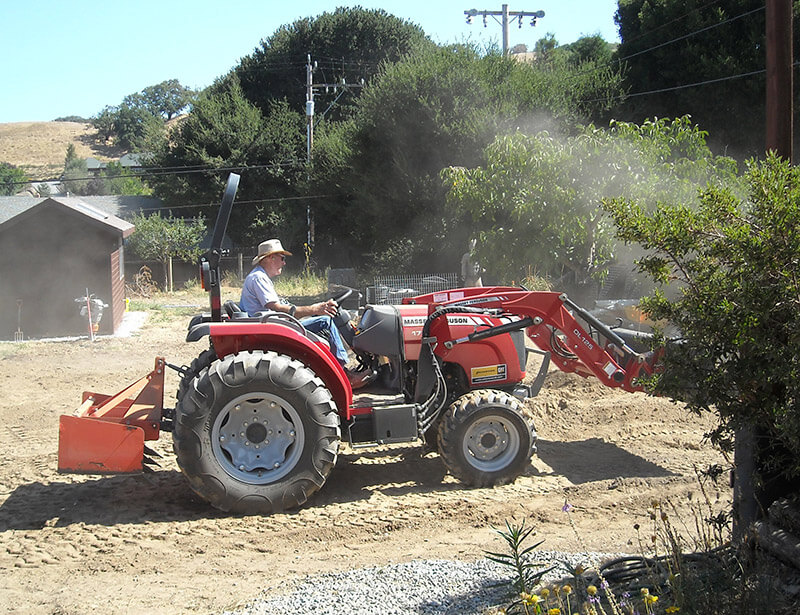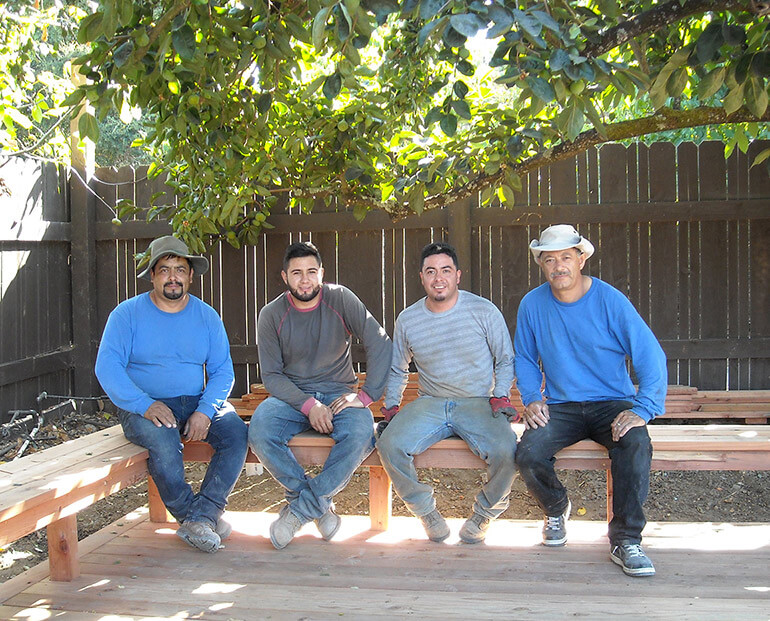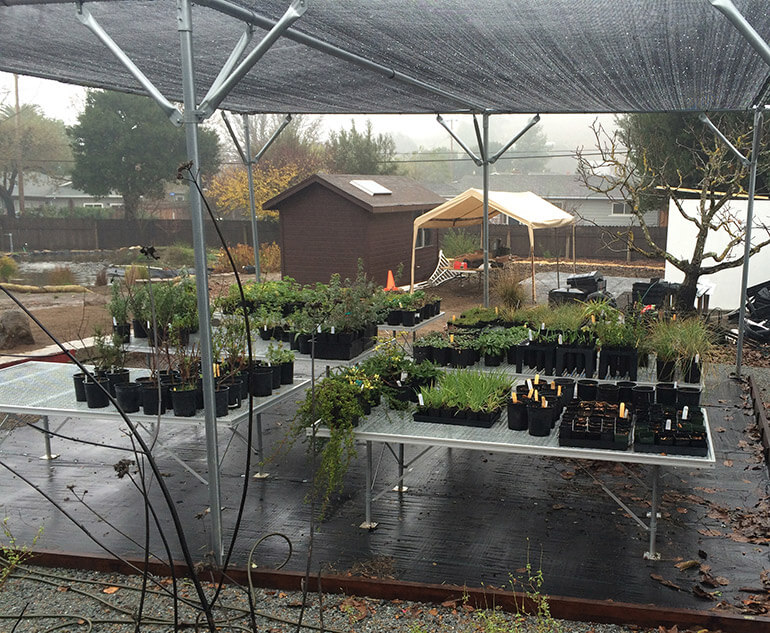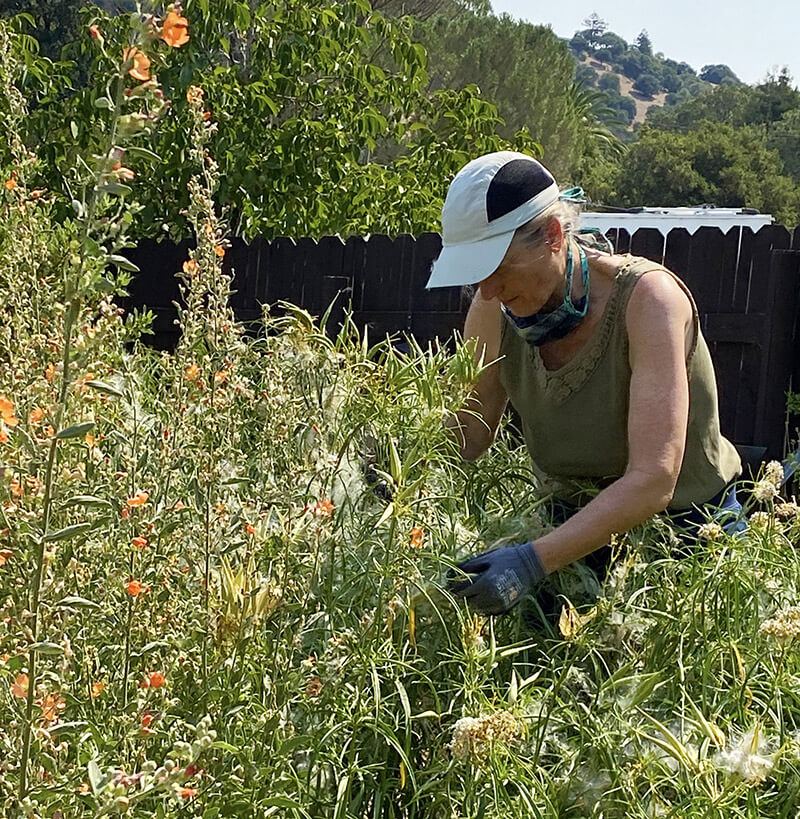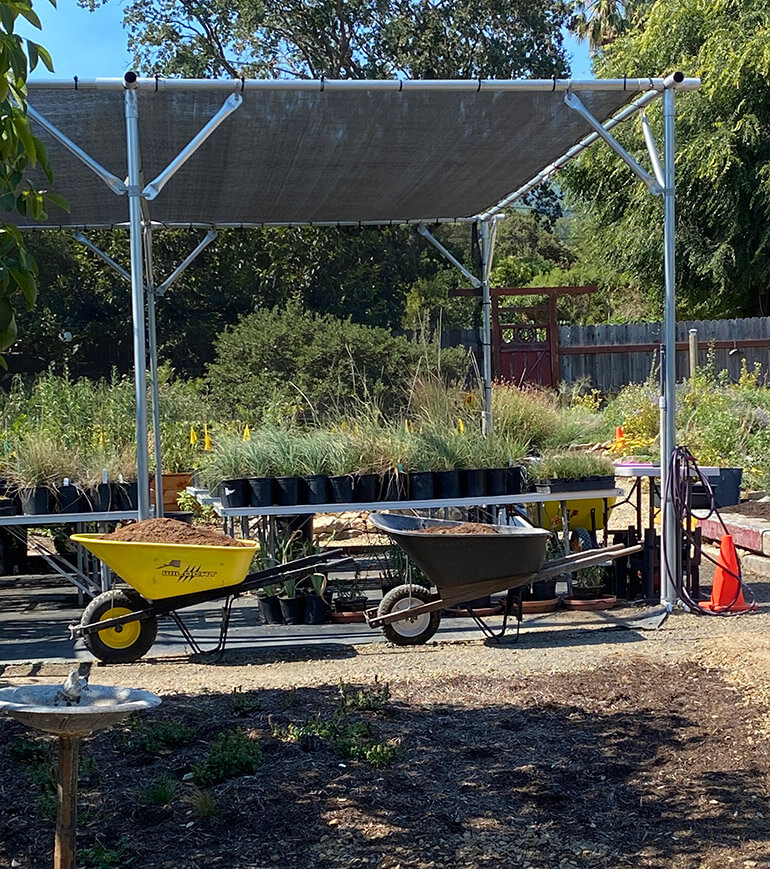Our New Home
Five years after losing our last, more public location, we are thrilled that Home Ground again has a place to call home. The best part of it is that we’ll now be able to invite many more people to join our friends of Home Ground volunteer group to realize our goal of becoming a green resource center for Marin County. At our new Home Ground, we’ll be connecting the worlds of gardening and ecology.
In January 2019, we signed a long-term lease on about an acre of level ground in the Indian Valley area of Novato, and we’ve now been working for over a full year on the build-out of our new growing grounds. We are in the process of getting certified as an organic nursery and we’ll follow all the best-management practices for propagating our plants. The demonstration gardens will be about sustainable, organic gardening methods. Various educational presentations and lots of hands-on workshops will be offered to help us all learn how to create and maintain thriving California-style gardens with plenty of diverse resources for all creatures!
We started with a field of weeds and some very soggy ground. Our very first task was to address the drainage issues and do a lot of basic cleanup. We’ve removed all sorts of weedy plants (such as a small grove of terribly invasive privets) and brought in many cubic yards of fill soil to create solid, flat areas for a large shade house and additional grow-benches for plants. We’re in the process of installing greenhouses, soil bins, shaded work areas, a composting site, and storage sheds.
We’ve created a really nice gathering area for our volunteers and for people attending classes: a large redwood deck with seating in the shade of a large, old Fuyu persimmon tree. We’ve also planted out the first of our demonstration gardens, a manzanita habitat on a berm, with more than a dozen species and cultivars of these beautiful, iconic California natives.
When we’ve completed the basic build-out, we will be relying on our volunteers to help us with plant propagation, with installation and maintenance of more demonstration gardens, and with the ongoing care of a small fruit orchard. The areas in and around this small orchard will become a field of wildflowers each spring and in time, with the addition of a bog and the appropriate native riparian plants, our little pond will become a perfectly balanced natural ecosystem.
We’ll be planting out hedgerows for habitat, as well as a fedgerow (food hedge) and a wedgerow (wet hedge)! We plan to demonstrate how to attract pollinators with a floriferous garden, and also provide for the monarch butterflies with a “way station.” And we’ll be providing nesting boxes for a variety of birds and also several bat roosting houses. Native plants provide many benefits for native creatures like these, and by inviting them to share our gardens, their lives become more meaningful to us and the pleasures of nature are made more personal.
At Home Ground Habitats, we want to help restore an awareness of California’s amazing natural resources in an effort to influence the way people design, plant and tend their own gardens. Our main focus will be on California native plants but, as any plant lover will tell you, it’s really hard to keep a narrow focus in the wonderful world of plants! We’ll also be growing non-native plants from other Mediterranean climates that provide habitat resources and are well behaved (those that pose no threat of becoming invasive in wild lands). We are particularly fond of salvias and will be growing many of the California native species as well as a selection of salvias from other Mediterranean climates around the world.
Growing plants is an educational experience in and of itself; there is no better way to understand the phenology of a species and to become really familiar with the qualities of a certain plant than to grow it from a tiny seedling on to a healthy, mature specimen. Many of the plants we grow are from locally collected seeds; others are from cuttings or divisions from “mother” plants in our own gardens. We do this work because we love it and because the end results are incredibly satisfying. And, as our wonderful volunteers soon come to understand, there are always lots of plants and resources to share with others!
We now know that, in order to save a species, we must first save its habitat. Given how much land has been taken for development, our back yards now need to become the habitat that was lost when bulldozers plowed over our woods and fields. Our ultimate goal is to influence more gardeners to turn their home gardens into habitat sanctuaries. By growing the most appropriate plants for habitat, and by offering extensive, hands-on educational resources that support and help would-be habitat gardeners, we hope to see this type of garden become much more prevalent. This will help reestablish wildlife corridors between remaining protected open spaces and provide migrating species with a place to rest and refuel. If you’d like to join us on this learning adventure, please subscribe to our email bulletin to receive notices of upcoming workdays, demonstrations and classes. We look forward to welcoming you!

